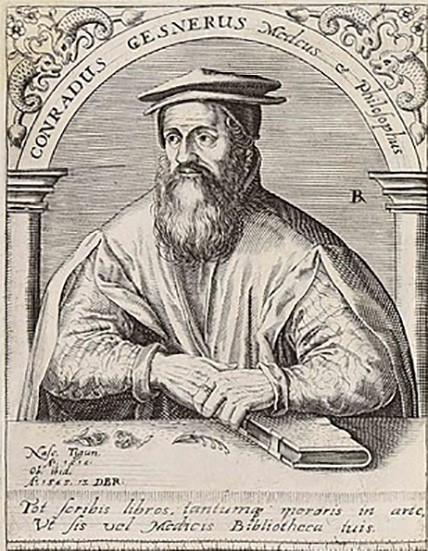The recently shared photograph of the hippocampus showing the new carousel piece that is currently exhibited in the Thompson Exhibition Building was accompanied by a 16th century woodcut of a hippocampus. It appeared in Conrad Gessner’s 1560 Nomenclator Aquatilium Animantium (Nomenclature of Aquatic Animals), one of a number of zoological works written by the Swiss naturalist before his untimely death from the plague in 1565 at the age of 49.
Conrad Gessner was an extraordinary student, teacher, physician, bibliographer, philosopher and scientist who collected information from observation, from earlier sources and from colleagues around Europe. In addition to his many other talents, Gessner was a linguist fluent in Greek, Latin and Hebrew, teaching Greek at the University of Lausanne before getting his medical degree in Basel in his further search for scientific and natural truth. Conrad Gessner was a truly gifted scholar and compiler of information.
Because he copied illustrations from many sources, such as the earlier artist Albrecht Durer, many of his woodcut illustrations in his publications are very accurate, and yet others others are quite whimsical as they are images of fictional and fantastic beasts taken from less reliable sources. Below are just a couple of his woodcuts from his bestiary including a sperm whale gone rogue and one of a number of mermen that populated his oceans. The sea turtle is a bit more accurate to real life than the others (as far as we know!).
Gessner’s book is part of the Rare Book collection in the G.W. Blunt White Library at Mystic Seaport Museum.






